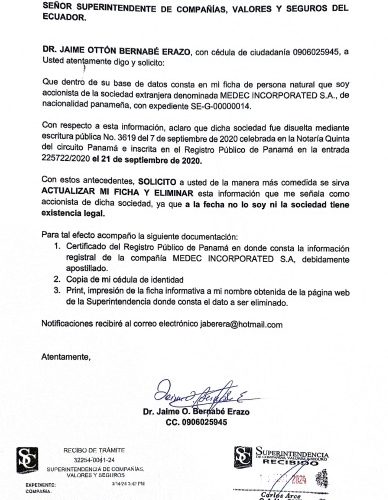
On April 26, a nearly 500-foot stretch of dock owned by top executives at Eastern Fisheries collapsed into the New Bedford harbor. It was the second such collapse in just six months — the first of which hospitalized two workers and has since caused significant challenges for some businesses operating at the port.
The sudden dock collapses have left waterfront business owners and city officials asking: what are the causes, who is responsible, and is it safe to operate heavy machinery on the busy but dilapidated northern wharf?
The city says the aging port needs an overhaul. It’s a challenging feat. Facing the costs, the Port Authority has sold some properties in recent years, transferring the burden of expensive repairs to the companies that use the infrastructure. But the patchwork of public and private properties along the northern wharf makes it difficult to carry out one comprehensive overhaul.
“This latest incident highlights the need for long-term solutions to aging infrastructure at different points in the port. Such solutions will require time and significant outside funding,” Gordon Carr, director of the New Bedford Port Authority, wrote in a statement to The Light. “The Port Authority continues to take its role in such an effort seriously and will support businesses and property owners in pursuing these solutions as we are able.”
The first collapse took place on Oct. 11, 2023. A section of bulkhead spanning about 200 feet by 40 feet was under renovation when it split from the rest of the pier and sank into the port. Four people fell into the water, two of whom were taken to the hospital for non life-threatening injuries. “It was very, very sudden,” Roy Enoksen, founder of New Bedford scallop company Eastern Fisheries, told The Light at the time.
In March, the Occupational Safety and Health Administration (OSHA) cited Connecticut-based Mohawk Northeast Inc., which Eastern Fisheries had contracted to renovate the wharf. OSHA fined Mohawk Northeast over $214,000 for “willful” and “serious” workplace safety violations related to the collapse. That included failing to determine if the bulkhead “had the strength and structure integrity to support employees safely,” according to the OSHA citation.
Then, just one month after OSHA issued its citation, the second section of waterfront collapsed into the harbor. Both properties are owned by R.C.P. Realty, which lists Ronald Enoksen, president of Eastern Fisheries, as manager, property records show. Eastern Fisheries used the piers to dock its large fleet of scallop vessels. The company operated a processing plant on the parcel until it was torn down about two years ago due to concern about the bulkhead’s structural integrity.
“We were afraid of this happening, and it happened,” said Roy Enoksen. “We are going to do what we have to do to rebuild it, but it is a very expensive process.”
Until a few years ago, the city owned all three waterfront parcels between Hervey Tichon Avenue and Antonio Costa Avenue. But in 2018, looking at expensive and urgent repairs, the city sold two parcels, each just under 3 acres, to the real estate group acting on behalf of Eastern Fisheries, which previously held a 99-year lease with the city. Each sold for about $1 million.
The city, the New Bedford Port Authority and Eastern Fisheries have long known about the bulkhead’s deteriorating condition. The city contracted an inspection of the properties in 2018, which found the pier spanning all three properties to be in “poor condition” and that “some piles were observed to be completely deteriorated.”
Management of Eastern Fisheries wrote in its proposal to buy the properties that, although the bulkhead “is currently in a serious state of disrepair . . . Eastern and their related entities have the financial wherewithal to purchase, repair and maintain the properties in question.” Since then, Eastern Fisheries has contracted Mohawk Northeast to make the necessary repairs. But the bulkhead collapsed nonetheless.
Roy Enoksen, of Eastern Fisheries, said the renovations were delayed by environmental permitting hangups. “It was a serious setback,” he said. “We have been working on the permitting situation since we bought the property.”
The collapses have caused issues for other businesses operating on the northern wharf. The third parcel, straddled on each side by the two sections of collapsed bulkhead, is still owned by the city but leased to clam company Sea Watch International. Its fleet of six New Bedford clam vessels routinely offloads on the pier. Some of the vessels make up to two trips per week, unloading as much as 540,000 pounds of clams per trip.
The process requires heavy machinery, including a large crane and multiple forklifts, to move the steel cages full of clams from the boats to the company’s waterfront processing plant.
“It’s a lot of weight on that dock,” said Frank Cardoso, who operates the crane as an independent contractor for the Sea Watch fleet. The company briefly suspended its operations after the collapse. It has since leased a larger crane that can reach the boats without being stationed on the bulkhead. Offloading the vessels now takes an additional six hours, crew members said.
Carr wrote in a statement to The Light that the Port Authority has been in contact with the affected businesses and offered assistance with vessel storage and offloading. He said the company has so far been able to work around the issues, though safety remains a concern.

In an interview, Cardoso referenced a long, wide crack stretching along the bulkhead, running from the collapsed Eastern Fisheries dock through the Sea Watch property and to the now-collapsed dock on the other side. Over the last few years, Cardoso said, he has seen the crack grow from a small fracture to a foot-wide chasm splitting the bulkhead from the land.
“It seems pretty sound. We hope it is,” he said. “No one wants to find out what happens if it isn’t.”
Email Will Sennott at [email protected].
More stories by Will Sennott
The post After second dock collapse, troubles on New Bedford waterfront appeared first on The New Bedford Light.



